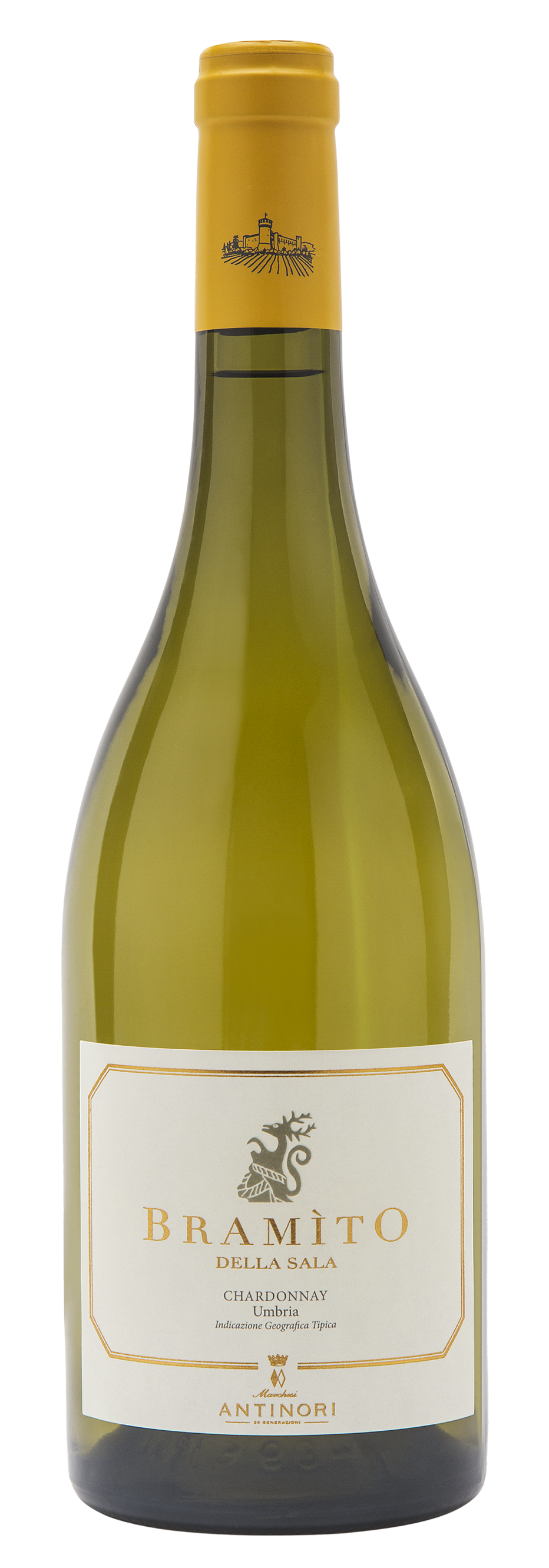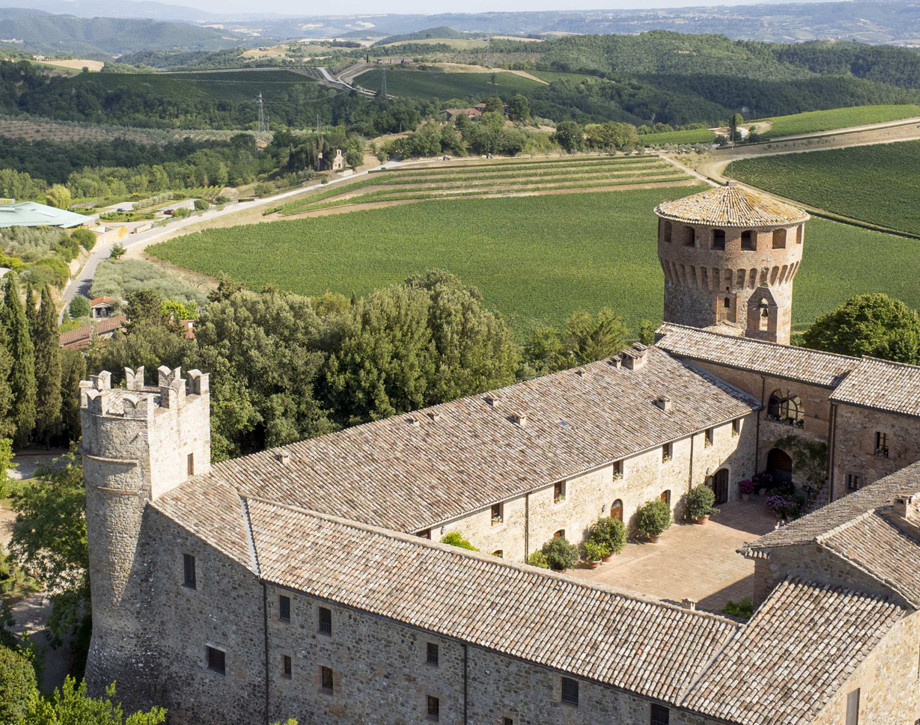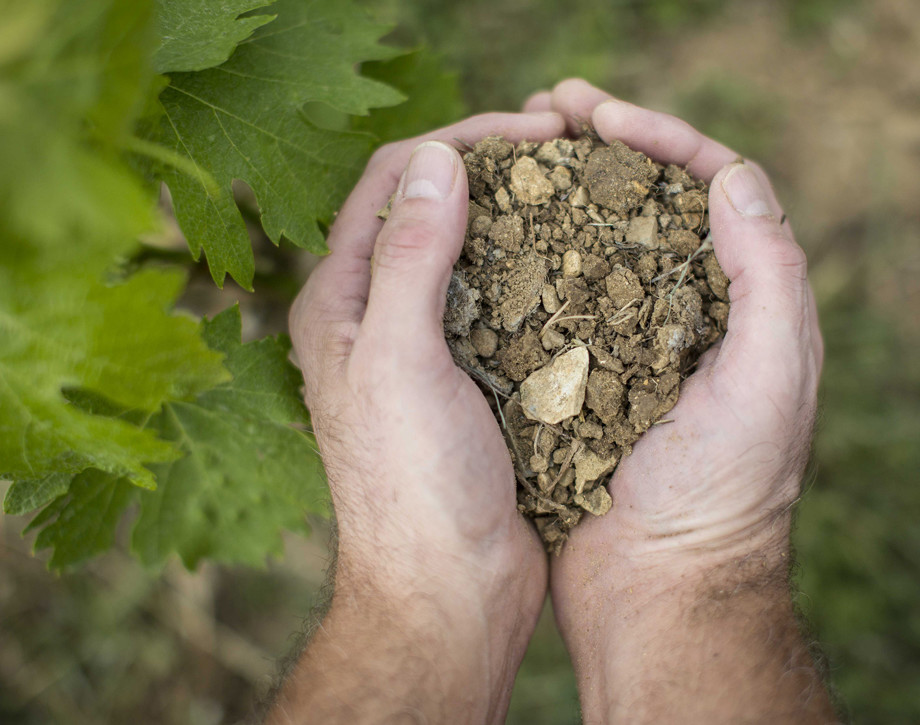Bramìto della Sala

Climate
Winter weather was mild and sunny while spring saw lower than average temperatures and frequent rain showers. These climatic conditions persisted up until the end of May and affected bud break of all grape varieties, causing a delay of approximately 10 days. The month of June brought dry weather; the vines benefitted from generous groundwater reserves and maintained good vine balance even during the hot month of August, conditions that allowed complete veraison and a slow regular ripening phase. Optimal temperature swings between day and night produced grape clusters that were healthy and rich in aromatic compounds. Harvesting activities began at the end of August with berries that were healthy and ripe, characterized by excellent freshness and an outstanding aromatic profile.
Vinification
Grapes were brought to the cellar, destemmed and gently crushed. The must and the skins were chilled to a temperature of 10 °C (50 °F) and transferred to stainless steel tanks for a short period of maceration, approximately 2-4 hours, in order to enhance flavors and extract the grape variety’s aromatic profile. The different lots were treated separately, some went into oak and some into stainless steel vats where alcoholic fermentation occurred at a controlled temperature of di 16-18 °C (61-64 °F); only the oak fermented lots underwent malolactic fermentation. The wine was then blended and bottled.
Historical Data
Bramito della Sala is produced from the vineyards surrounding the medieval castle at Castello della Sala. One variety that thrives in this terroir is Chardonnay. The vineyards are on soils rich in fossil deposits with veins of clay that give the wine minerality and elegance. Bramito della Sala’s first vintage was 1994.
Tasting Notes
Bramito 2019 is straw yellow in color with pale greenish highlights. On the nose it is delicate with notes of ripe exotic fruit with light citrusy sensations. The palate is elegant with good structure accompanied by excellent freshness and a sapid finish with pleasurable notes of vanilla and hazelnut butter.

The Wine
Bramito is produced from the vineyards surrounding the medieval castle at Castello della Sala. One variety that thrives in this terroir is Chardonnay. The vineyards are on soils rich in fossil deposits with veins of clay that give the wine minerality and elegance.

Climate
Winter weather was mild and sunny while spring saw lower than average temperatures and frequent rain showers. These climatic conditions persisted up until the end of May and affected bud break of all grape varieties, causing a delay of approximately 10 days. The month of June brought dry weather; the vines benefitted from generous groundwater reserves and maintained good vine balance even during the hot month of August, conditions that allowed complete veraison and a slow regular ripening phase. Optimal temperature swings between day and night produced grape clusters that were healthy and rich in aromatic compounds. Harvesting activities began at the end of August with berries that were healthy and ripe, characterized by excellent freshness and an outstanding aromatic profile.
Vinification
Grapes were brought to the cellar, destemmed and gently crushed. The must and the skins were chilled to a temperature of 10 °C (50 °F) and transferred to stainless steel tanks for a short period of maceration, approximately 2-4 hours, in order to enhance flavors and extract the grape variety’s aromatic profile. The different lots were treated separately, some went into oak and some into stainless steel vats where alcoholic fermentation occurred at a controlled temperature of di 16-18 °C (61-64 °F); only the oak fermented lots underwent malolactic fermentation. The wine was then blended and bottled.
Historical Data
Bramito della Sala is produced from the vineyards surrounding the medieval castle at Castello della Sala. One variety that thrives in this terroir is Chardonnay. The vineyards are on soils rich in fossil deposits with veins of clay that give the wine minerality and elegance. Bramito della Sala’s first vintage was 1994.
Tasting Notes
Bramito 2019 is straw yellow in color with pale greenish highlights. On the nose it is delicate with notes of ripe exotic fruit with light citrusy sensations. The palate is elegant with good structure accompanied by excellent freshness and a sapid finish with pleasurable notes of vanilla and hazelnut butter.

Castello della Sala
Castello della Sala is located in the Umbria region, not far from the Tuscan border, about 18 kilometers from the historic city of Orvieto. The Medieval castle’s property extends over an area of 600 hectares (1482 acres), 200 hectares (494 acres) are planted with vineyards at an altitude that varies between 220 and 470 meters above sea level (722/1541 feet) on the gently rolling hillsides that characterize the beautiful countryside in this area. Castello della Sala is the perfect place for growing white varieties. The vines grow in clay and calcareous based soils, rich in fossil shells, and they are well exposed to the rising of the sun with an excellent difference of temperature between day and night. The one exception to the rule is Pinot Noir, the only red variety that has found in this area ideal growing conditions to best express its full potential.

Soil
Soils originating from sedimentary deposits of marine fossils with veins of clay.
















